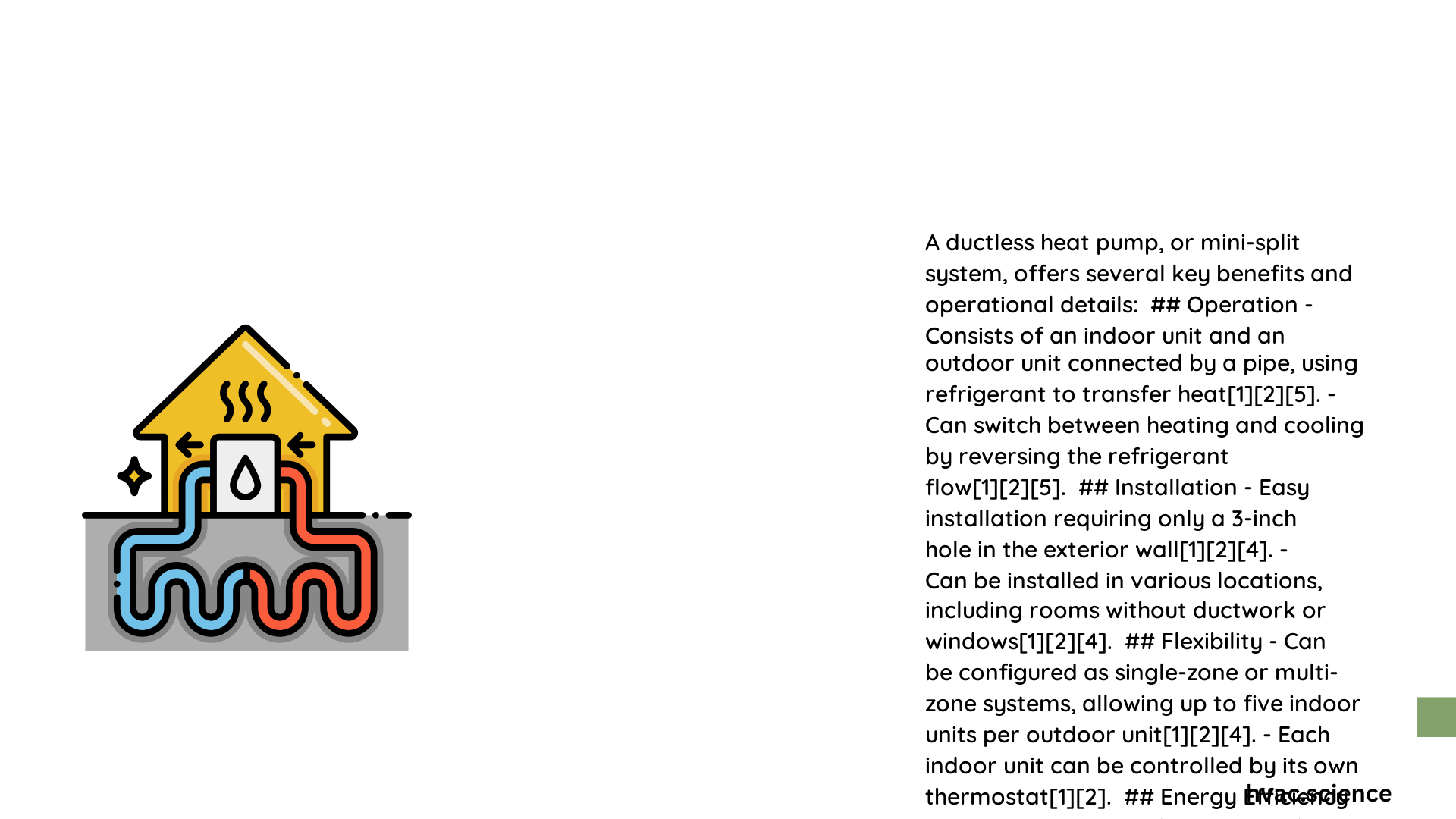Ductless heat pump technology offers homeowners an efficient, flexible, and cost-effective solution for heating and cooling spaces without traditional ductwork. This comprehensive guide provides expert insights into installation, maintenance, energy efficiency, and regional incentives, empowering homeowners to make informed decisions about their home comfort systems and maximize energy savings.
What is a Ductless Heat Pump?
A ductless heat pump, also known as a mini-split system, is an innovative heating and cooling solution that transfers heat between indoor and outdoor units without requiring extensive ductwork. These systems consist of:
- Indoor Air Handler: Wall-mounted unit that distributes conditioned air
- Outdoor Condenser: Exterior unit that exchanges heat with the environment
- Refrigerant Lines: Connecting tubes that transfer thermal energy
Key Advantages of Ductless Heat Pumps
| Feature | Benefit |
|---|---|
| Flexible Installation | No ductwork required |
| Energy Efficiency | Up to 50% lower energy consumption |
| Zonal Temperature Control | Individual room temperature management |
| Quiet Operation | Minimal noise during functioning |
How to Choose the Right Ductless Heat Pump?

Selecting the appropriate ductless heat pump involves several critical considerations:
- Space Assessment
- Calculate total square footage
- Evaluate insulation quality
-
Analyze local climate conditions
-
System Capacity Requirements
- Determine BTU needs based on room size
- Consider ceiling height
-
Factor in sun exposure and room usage
-
Energy Efficiency Ratings
- Look for high SEER (Seasonal Energy Efficiency Ratio) ratings
- Check HSPF (Heating Seasonal Performance Factor)
- Compare manufacturer specifications
What Tools Are Needed for Installation?
Professional installation requires specialized tools:
- Drill and drill bit set
- Pipe cutters
- Vacuum pump
- Manifold gauge set
- Torque wrench
- Electrical testing equipment
- Nitrogen tank with pressure gauge
How to Troubleshoot Common Ductless Heat Pump Issues?
Refrigerant Leak Detection
- Use electronic leak detector
- Check connection points
- Inspect refrigerant lines for damage
- Measure system pressure
Electrical System Diagnostics
- Test voltage with multimeter
- Verify wire connections
- Check circuit breaker functionality
- Inspect control board
Northwest Ductless Heat Pump Incentives
Homeowners in the Pacific Northwest can benefit from multiple incentive programs:
- Utility Rebates: $500 – $2,000
- State Tax Credits: Up to 30% of installation costs
- Federal Energy Efficiency Credits: Additional savings potential
Energy Efficiency Performance
Typical ductless heat pump performance metrics:
– SEER Rating: 18-25
– HSPF Rating: 8-12
– Annual Energy Savings: 30-50% compared to traditional systems
Professional Installation vs. DIY
| Approach | Pros | Cons |
|---|---|---|
| Professional | Warranty protection | Higher upfront cost |
| DIY | Lower initial expense | Risk of improper installation |
Maintenance Best Practices
- Clean air filters monthly
- Check refrigerant levels annually
- Inspect electrical connections
- Clean outdoor unit regularly
- Schedule professional maintenance
Conclusion
Ductless heat pumps represent a sophisticated, energy-efficient solution for modern home comfort. By understanding installation requirements, maintenance needs, and available incentives, homeowners can make informed decisions that enhance comfort while reducing energy consumption.
